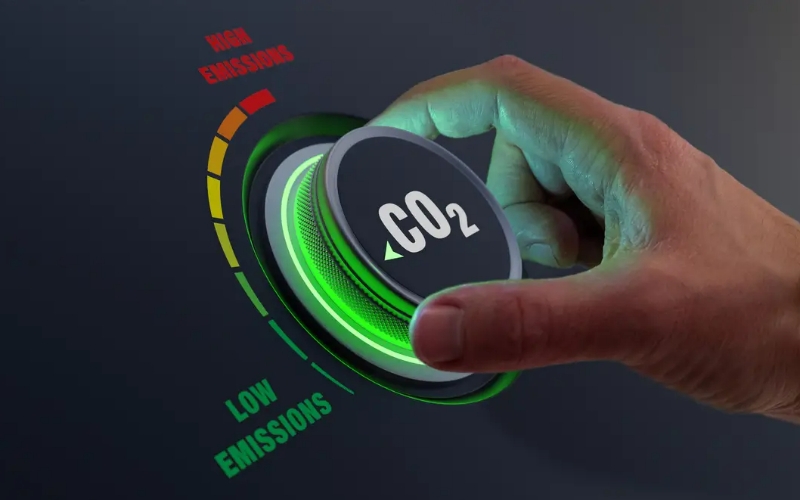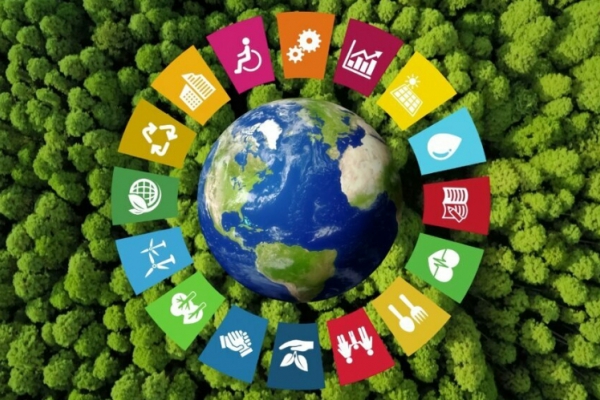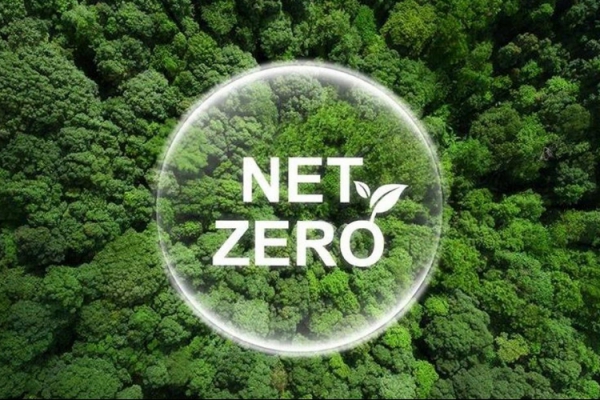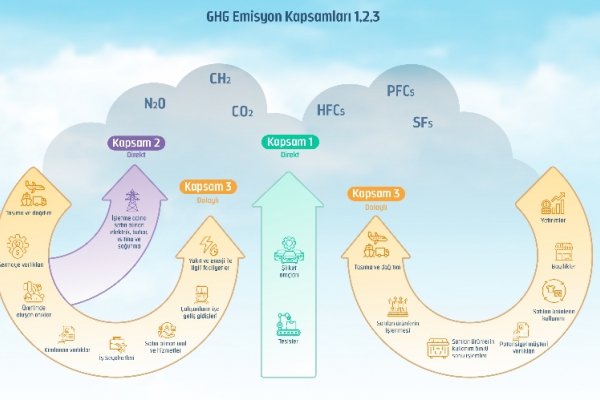13 Ways to Reduce Your Carbon Footprint

As conscious consumers demand transparency, attention is focused on companies shifting to more environmentally friendly practices. If you want to know how your business can reduce its carbon footprint, this article is for you. We'll show you 13 ways to reduce your carbon footprint so you can create your strategy as you move towards calculating and eliminating your emissions.
- Choose renewable energy and practice smarter energy efficiency
It is possible to switch to carbon-friendly energy sources such as renewable energy sources, where you can include solar panels or generate wind energy. Renewable energy will help you consistently lower your energy bills and reduce your carbon footprint. As more businesses become smarter about their energy sources and how they use them, a more consistent flow of renewable energy will come online, creating more green jobs and helping communities thrive in the long term.
Although renewable energy sources may be dependent on weather conditions in the short term, this power source will be easier to distribute to businesses in the long term and will provide a more stable service than traditional fossil fuel energy services. For example, if there is a technical problem with a wind turbine, someone else can take over producing energy when needed.
- Measure your carbon footprint
It's not easy to know what your carbon footprint is without actually measuring it. With intuitive and precise software like Net0, it is easier for businesses to track, calculate and offset their carbon emissions in the same place. Net0 allows businesses to record, track, analyze and generate investor-level reporting from one central control panel. Colleagues and vendors can each enter their information into their own section of the dashboard, so all contributions are made individually, making it a simple and routine step to incorporate this into business practices in a very short time.
- Make carbon offsets
After recording and calculating carbon emissions, two more steps are needed to reach net zero. First, see how you can reduce or eliminate emissions. Then use Net0 to immediately offset emissions from the same dashboard where you added the data. Now everything is recorded and balanced from A to Z. You can pay for carbon offsets from the Net0 control panel by selecting the projects you want to contribute to. Paying for offsets will enable projects to be implemented around the world or in your community, such as wind projects or planting trees, that will offset the carbon dioxide your business emits into the atmosphere. These can be paid for by purchasing offset credits, and all emissions from a business trip in a rental car to your annual energy supply can be offset. Regardless of the scale, you can reduce your carbon footprint from one place.
Balancing emissions used to be difficult. Companies had to find partners they agreed with, purchase offsets, and request certification. Moreover, it was difficult to even tell whether the balancings had been made or not. Net0 can do all this in one place with over 200 reliable options available for balancing and 40 of them can be done in one click without any confirmation.
- Use sustainable web hosting services
Many businesses or individuals do not consider sustainable web hosting. Because externally hosted servers use so much energy, the fossil fuels used to keep them running are also increasing. Web hosting involves tens of thousands of computers that use a lot of energy themselves and, on top of that, require high-energy cooling systems to cool them down because they produce so much heat. TechRadar reports: "Web Neutral Project founder Jack Amend calculates that powering the average website produces 4,500 pounds of CO2 per year, the equivalent of driving the average new car for more than 10,000 miles. He's not exactly sure what 'average' means in this one." We're not in the context, but whatever the exact details, the message is clear: hosting really does have an environmental impact, and it's much more important than you might think."
- Support regenerative agriculture
Even further away from the sustainable or circular supply chain is the regenerative supply chain. Regenerative agriculture ensures the healthiest soil microbiome, increases water retention capacity, and sequesters carbon to ameliorate global warming, among other things mentioned above.
Larger companies such as Nestle state that they invest in the renewable soils they source and export them to foreign countries. They announced that they are carrying out various projects with all farming communities that require time and investment. Supporting regenerative agriculture can be as simple as donating to projects you trust, or it can go more involved, but in the long run it adds value on a more personal level by interacting with the farmers you source from and even finding new places to source from. unless everyone is on board. Regenerative agriculture is a big investment, but if the value it adds is recognized by customers and becomes a core value of the company, it can be achieved by businesses large and small if you take the time to seek out the right people and resources.
- Participate in fair trade sourcing
Regenerative agriculture is also linked to fair trade sourcing to ensure farmers can improve their lives, work and community conditions by working with you. If your company buys fair trade carbon credits, it can offset them and informed consumers will know it is a sustainable, carbon friendly and fair trade business. These loans will help improve fair trade zones for better air quality, invest in projects such as drought-tolerant crops in required areas, or reduce soil erosion due to tree planting projects that may be affected by flooding in areas where this occurs.
- Re-evaluate shipping and logistics strategies
One of the biggest emitters of carbon dioxide is logistics. Depending on the scale of your logistics, most take speed and cost into account if the shipment is very heavy, consists of smaller parcels, or is shipped locally or globally. While it's great for a delivery service like Amazon to ship a DVD overnight or within an hour to their customers, it's destructive to the environment. In other words, they give a discount when you package more than one product together and ship it at once. These same customers are now joining the conscious consumer bandwagon and criticizing the services they want for killing the environment.
- Include production
They are two departments that can act proactively rather than reactively regarding the packaging of the manufacturers and the stocks managed by the purchasing teams. There is more you can do after the product reaches the end consumer, such as making biodegradable packaging, but whether the end consumer actually recycles or reuses it is their responsibility. You can only do as much as you can.
Paptic Ltd. in Finland. Companies such as are using sustainable packaging for products in the supply chain to improve the result of waste that occurs after the product reaches the end consumer.
- Use smarter temperature systems
Food waste is also a major carrier of carbon dioxide emissions and the UN Environment Program records food waste in every region, United States – 30%, Latin America – enough is wasted to feed 300 million people annually, United Kingdom – 1/3 6 7 million tons and many more regions are mentioned just to give a few examples. Food waste from transportation at bad temperatures, over-freezing freezers and refrigerators that people in many regions who do not know how to use simple temperature systems do not adjust accordingly, resulting in spoiled food that harms people, animals, the environment, waste. Packaging sets methane greenhouse gases and is expensive in terms of money.
- Reduce, reuse, recycle
Reduce the amount of printing and office paper and ink. Print only what is necessary and make it a rule to print on both sides of the paper whenever possible.
Use only essential office supplies made from recycled paper and less toxic ink.
To prevent too much printed material from being thrown away, put QR codes on marketing materials and products to include information that can be stored on mobile phones. To increase sustainability, encourage your employees to print QR codes on business cards or, better yet, keep them on their mobile phones for instant scanning.
Reduce food waste as it is a big factor in greenhouse gases, so always consider food essentials when preparing or ordering office shareable snacks and groceries.
Make sure your company's recycling bins are used appropriately, recyclable waste is rinsed, and shredded paper is picked up by an appropriate company. Most people don't actually know how to recycle properly, overriding this and putting up a poster in your kitchen will help educate employees It will help.
- Plan for a circular economy for your supply chain
The circular economy is being adopted by supply chains large and small. As consumers demand greater transparency and environmentally friendly brands and products, the circular economy provides a competitive advantage as they care about having little or no waste in the product lifecycle, rather than relying on linear supply chains that do little to be proactive in the product lifecycle. The product reaches the final distributor. While end consumers still need to do their part and manufacturers still need to move towards environmentally friendly packaging, the circular supply chain will strengthen the reduction of waste materials, chemicals and carbon emissions.
- Promote greener travel
Many companies compensate for greener commutes as one of their employee hiring benefits. Optionally, they can benefit from a free bus ticket or a monthly paid party. Or other public transport compensation like subways or ferries in some places. It's also a great idea to encourage cycling by providing a safe place to store bikes in the office when employees go to work; because many of the bicycles are stolen from parking lots with cameras and security.
When it comes to sales reps making regular business trips and going to construction sites in cars, it may be the best choice to offset the carbon footprint until more cars run out of electricity. With Net0, it's easy to add transportation data and offset emissions instantly. Net0 automates carbon accounting as much as possible to reduce the amount of manual work your colleagues and suppliers have to do when entering data, resulting in accurately measured data by Net0's system every time.
- Reduce air travel
Face-to-face business is still necessary and part of positions that encourage business relationships. Although not all work can be done by Zoom, using as little air travel as possible and balancing what you use will go a long way.
Taking longer trips to avoid multiple trips to the same places in a month to focus on visiting as many businesses, vendors, attending conferences, and more as possible.
Hiring remote workers is great for allowing someone to take their workload elsewhere rather than constantly flying back and forth. There were many outside sales roles that required such trips to expand their territory, such as merchants with very specialized positions, experience, and connections. However, as new structures in business, such as covering different regional areas with less airtime and greater time and cost efficiency, become a noticeable and sustainable option, many companies are restructuring to adapt to a more environmentally friendly way of connecting such businesses .



 Start Now
Start Now



